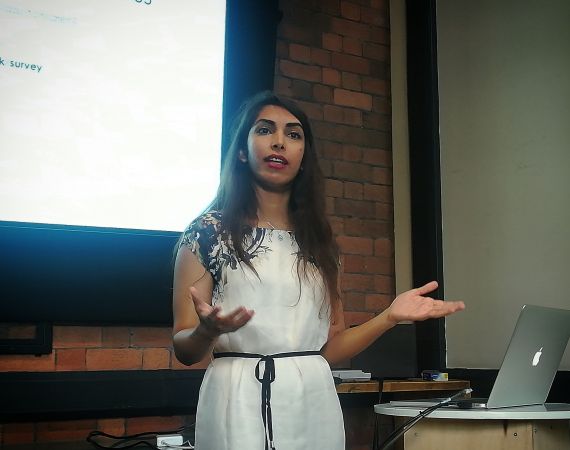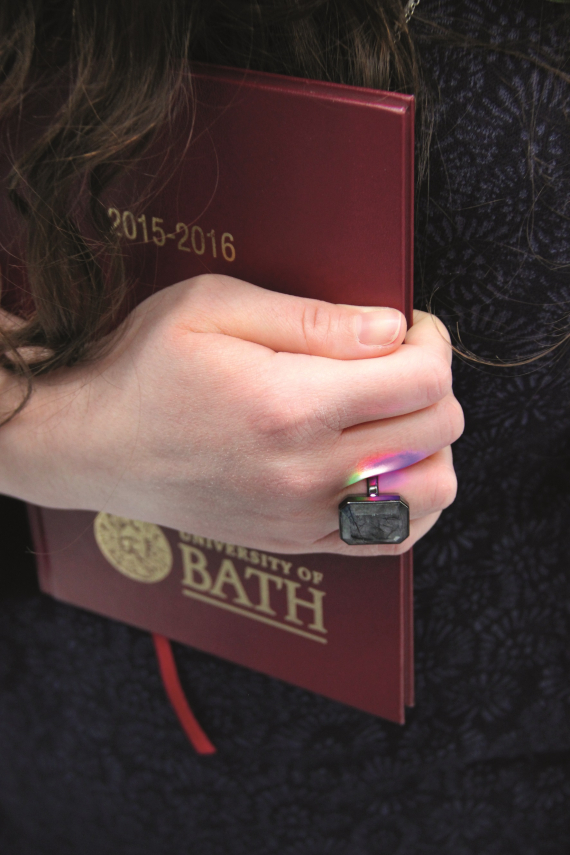Lunchtime talk write-up
Posted on Thu 21 Sep 2017
Could the internet of things support our relationships with our parents?
This lunchtime PhD student at the CREATE lab and studio resident Bhagy shared her research ideas and questions around the ways that the Internet of Things can support relationships between adults and their parents.

Posted by
Speaker

Bhagyashree Patil
Bhagy is a PhD student. She is a member of CREATE lab at the University of Bath and her PhD runs alongside Object Sandbox and Play Sandbox projects at REACT hub.This lunchtime PhD student at Bath Uni and the CREATE lab and Studio resident Bhagy Patil shared her research ideas and questions around the ways that the Internet of Things can support relationships between adults and their parents. She presented some of the findings from her user studies and the key questions, challenges and ideas product designers should consider when looking to design IoT technologies for inter-generational communication.
Five Things I Learned
1. By 2020 there will be over 25 billion smart objects on the planet - three for every person. These objects, which may take the form of a smart watch or even a smart fishtank can create networks and collect or exchange data wirelessly over the internet. This network is also known as the Internet of Things, Bhagy’s area of PhD research. Bhagy wants to interrogate how we can utilise the Internet of things to bring parents and their adult children closer together.
2. People are moving away from their families for work and school more than ever and Bhagy had her lightbulb moment - quite literally – after moving from India to Bristol. Bhagy’s mum became concerned for her safety after long periods of no contact and it was then that Bhagy decided to utilise the Internet of things to let her mum know regularly that she is safe and sound - with minimum effort!
3. Bhagy’s first experiment used smart lamps, which she gave to a focus group of parents of adult children over the course of 4 weeks. The lamps would turn on when the children came home using data exchanged from their mobile phones to the lamps, letting the parents know that they were safe without the need to constantly get in contact. The feedback response was fascinating as Bhagy discovered that the needs of the parent differ from those of the child.
4. Overall the feedback was largely positive - parents reported feeling an increased sense of connectedness and emotional closeness to their kids and were sad to see the lamps go after the study. The kids also found it positive as they wanted to communicate with their parents more often and the lamps alleviated some of their guilt for not prioritising them. However others felt it was a threat to their privacy and parents of the older children who were in their 30s felt like it was intrusive to know their whereabouts. The one way nature of the exchange was an area that Bhagy developed and changed for her next experiment.
5. Bhagy started a new four week study using a smaller portable smart object which both adults and children could use to let the other know that they were thinking of them, regardless of their whereabouts. Bhagy came up with a ‘smart ring’- something that could blend in, which was reliable, consumed less power and presented information peripherally rather than on a screen. Whenever the parent or child thought of one another all they had to do was tap the ring which would then vibrate to let the other know. The instant haptic nature of the ring helped the kids to stay in touch with their parents, and parents reported being surprised at how often their kids thought about them. Both felt a warm nurturing sensation from receiving little signals from the ring.
Bhagy is currently looking for IoT designers, products designers, UX/UI designers and HCI researchers for an upcoming Design Thinking workshop in early November. The workshop will explore how these findings can inform designers to support closeness and connectedness.
Get involved by reaching Bhagy on twitter.

